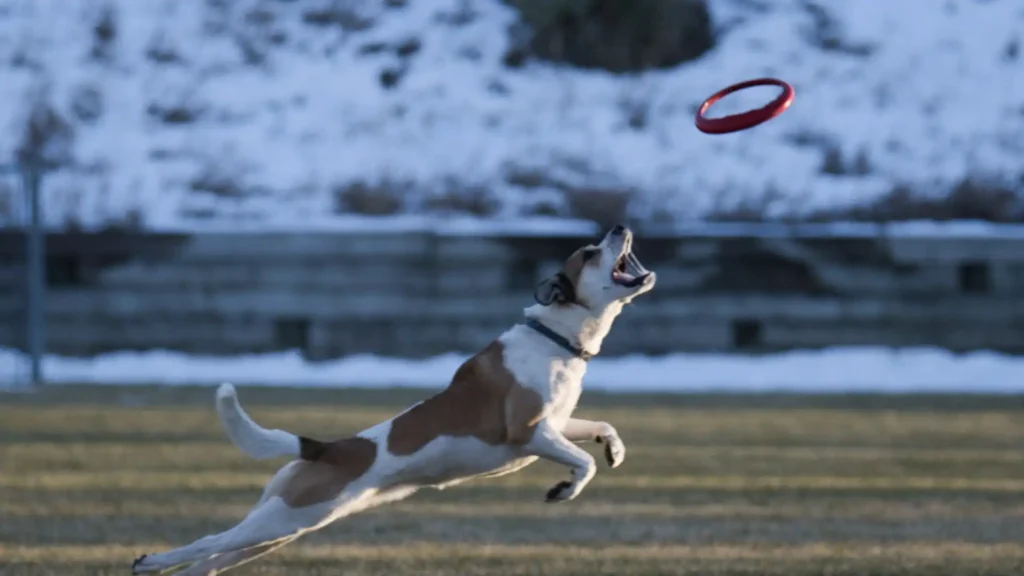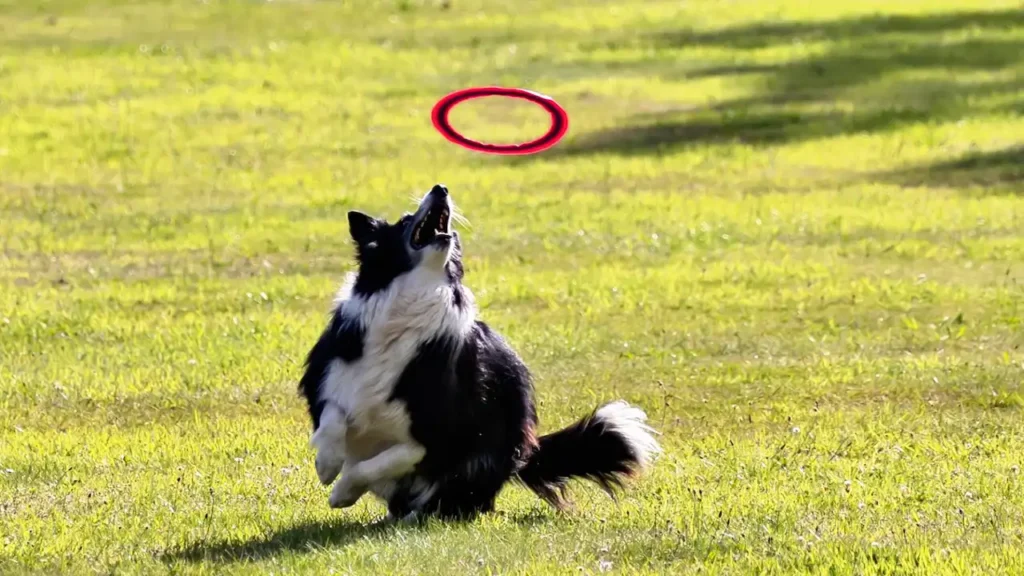Teaching your dog to fetch is a fun and rewarding activity. Fetch provides mental stimulation, physical exercise, and helps reinforce obedience training. While some dogs naturally enjoy chasing after objects, others may need a bit of guidance to learn the game. With patience, consistency, and positive reinforcement, you can teach your dog to fetch in no time. Here’s how to do it:
Step 1: Choose the Right Toy
The foundation of teaching your dog to fetch begins with selecting the perfect toy. Dogs have individual preferences on choosing playthings. Some dogs love the bounce and unpredictability of a tennis ball, while others prefer the softness of a plush toy or the durability of a rubber chew toy. The key is to find a toy that not only excites your dog but also suits their size, breed, and play style.
Tennis balls are classic choices for fetch. They’re lightweight and easy to throw. Most dogs love chasing them. However, ensure the ball is in perfect size for your dog.
Soft, squeaky plush toys can be highly enticing for some dogs. Be cautious if your dog tends to destroy plush toys quickly. Always supervise playtime to prevent swallowing small parts.
Durable rubber toys are great for strong-jawed dogs that need something sturdy. They’re also excellent for games of fetch in water.
If your dog enjoys leaping and catching things mid-air, a soft frisbee might be a fantastic option. Frisbees encourage athleticism and agility. For dogs that need extra motivation, consider interactive toys like treat-dispensing balls. These can add an element of surprise and reward to the game.
When choosing a toy, prioritize safety above all else. Avoid toys that are too small for your dog’s mouth. They could easily swallow or choke on them. A good rule of thumb is to select a toy that’s too big to fit entirely inside your dog’s mouth.
Ensure the toy is made from non-toxic materials and can withstand your dog’s chewing habits. Supervise playtime with new toys to check for signs of damage.
Heavy toys can hurt your dog’s teeth. Opt for lightweight toys unless you’re working with a large breed.
Once you’ve selected the ideal toy, it’s time to introduce it to your dog. Start by engaging with the toy yourself. Bounce it on the ground, roll it across the floor, or toss it gently near your dog.
Show genuine excitement and enthusiasm. Dogs pick up on your energy and will likely mirror it. You can even let them sniff or investigate the toy before tossing it.
If your dog seems uninterested at first, don’t worry! Try different techniques to spark curiosity. Rub a bit of peanut butter, cheese, or another safe food onto the toy to make it appealing.
Wiggle the toy around to mimic prey-like behavior, which taps into your dog’s natural instincts. Hold a treat near the toy to create positive associations.
Step 2: Encourage Chasing
Chasing is the heart of fetch. It’s what makes the game exciting and dynamic. Before worrying about retrieving the toy, focus on building your dog’s desire to chase after it. This step lays the groundwork for the rest of the process.
Begin by tossing the toy a short distance away from you. Use an upbeat tone and say “Fetch!” as you release the toy. Keep your throws low and predictable initially. This helps your dog track the movement easily.
If your dog runs after the toy, immediately praise them with verbal encouragement like “Good job!” or offer a treat as a reward. Positive reinforcement is crucial here. It teaches your dog that chasing the toy is a fun and rewarding activity.
If your dog doesn’t immediately run after the toy, try these strategies. Use a squeaky toy. Many dogs are drawn to high-pitched sounds. A squeaky toy can grab their attention and entice them to give chase.
Mimic the movements of prey by dragging the toy along the ground. This taps into your dog’s natural hunting instincts. Place a treat near the toy to encourage your dog to move toward it. Over time, they’ll associate the toy itself with rewards. Get down on the floor and play with the toy yourself. Act excited and animated, showing your dog how much fun the toy can be.
To keep your dog engaged, vary the way you present the toy. Toss the toy in different directions to keep your dog guessing and maintain their interest. Alternate between short and slightly longer throws to challenge your dog and build anticipation.
Consistently pair the action of throwing the toy with the command “Fetch.” Over time, your dog will learn to associate the word with the desired behavior.
Step 3: Teach Them to Pick Up the Toy

Once your dog is reliably chasing the toy, the next step is teaching them to pick it up. While some dogs instinctively grab the toy, others may need guidance and encouragement. This step ensures that your dog understands the importance of holding the toy in their mouth.
Introduce a simple verbal cue like “Take it” or “Get it” to signal that you want your dog to pick up the toy. Position the toy close to your dog’s nose. Say “Take it” in a calm, clear voice while pointing to the toy. As soon as your dog picks up the toy, shower them with praise or give them a treat. Timing is important here—the reward should come immediately after they take the toy in their mouth.
After your dog masters picking up the toy, work on extending the amount of time they hold it. This step helps reinforce the idea that carrying the toy is part of the game.
Ask your dog to “Take it,” then count to two or three before giving a treat or praise. Slowly increase the duration they must hold the toy. Reward them each time they succeed. If your dog drops the toy prematurely, calmly ask them to “Take it” again without scolding. Stay patient and consistent.
If your dog hesitates to pick up the toy, try making it more appealing. Spread a small amount of peanut butter, cream cheese, or wet dog food onto the toy to entice them. Use a squeaky toy to capture their attention.
Step 4: Bring It Back
Bringing the toy back to you is the most challenging part of teaching fetch. Many dogs prefer to run off with the toy rather than returning it. This behavior is completely natural. It requires patience and strategic training to overcome. The goal here is to teach your dog that bringing the toy back to you results in positive reinforcement.
One effective way to encourage your dog to return with the toy is by using a long training leash (also called a check cord). This tool allows you to maintain gentle control while giving your dog the freedom to chase and retrieve:
Secure a lightweight, long leash (15–30 feet) to your dog’s collar. Throw the toy a short distance away while saying “Fetch.”
Once your dog picks up the toy, gently reel them in by applying light tension on the leash. As they approach, praise them enthusiastically with phrases like “Good boy/girl!” When they reach you, immediately reward them with a treat. Over time, they’ll associate returning to you with something positive.
Another powerful technique is the trade-up method. In this method, you offer something better than the toy they’re holding. This works particularly well for dogs who are reluctant to give up the toy.
Hold out a delicious treat or an exciting second toy and say “Trade” or “Give.” As soon as your dog drops the original toy, hand over the new toy immediately. Over time, your dog will learn that relinquishing the toy leads to something more rewarding.
For example, if your dog loves tennis balls but adores squeaky plush toys, use the squeaky toy as the “trade-up” item during fetch sessions. Eventually, they’ll eagerly bring the ball back in anticipation of getting the squeaker.
Step 5: Add Commands
As your dog becomes proficient at fetching, introduce specific commands. These commands refine their understanding of the game. Clear, consistent commands help streamline the process and improve overall obedience.
The “Drop it” command ensures that your dog releases the toy into your hand when they return. Follow these steps.
Hold a treat close to your dog’s nose while they’re holding the toy. Clearly say the command as they release the toy to take the treat. As soon as they drop the toy, give them the treat and lots of praise. Repeat this exercise frequently until your dog reliably responds to the command.
Over time, phase out the treat and rely solely on verbal praise or a second throw of the toy as the reward.
Pairing fetch with recall training strengthens your dog’s ability to come when called. Here’s how to incorporate the “Come” command.
After your dog picks up the toy, call their name followed by “Come.” Use a happy tone and clap your hands to encourage them to head back to you. When they arrive, reward them with a treat, or another throw of the toy. Use the same recall cue every time to reinforce the connection between the command and the action.
Step 6: Practice Regularly
Like any skill, mastering fetch requires regular practice. However, it’s important to keep sessions fun and engaging to avoid burnout.
Dogs have relatively short attention spans. Aim for 5–10 minute sessions. Short, focused bursts of training are more effective than long, drawn-out ones.
Always conclude each session with success. If your dog struggles with a particular step, backtrack to something they excel at before ending the session. This leaves them feeling accomplished and eager to try again next time.
To prevent boredom, vary the elements of the game. Change the type of toy you use. Alternate between indoor and outdoor settings. Introduce obstacles, such as tossing the toy around corners or under furniture.
Every step forward deserves recognition. Whether your dog chases the toy once, brings it halfway back, or successfully executes a full fetch, celebrate their efforts. Positive reinforcement builds confidence and motivation.
Teaching your dog to fetch requires patience, positivity, and plenty of rewards. Celebrate small victories along the way. Remember, the ultimate goal is to create a joyful experience for both you and your four-legged companion.




